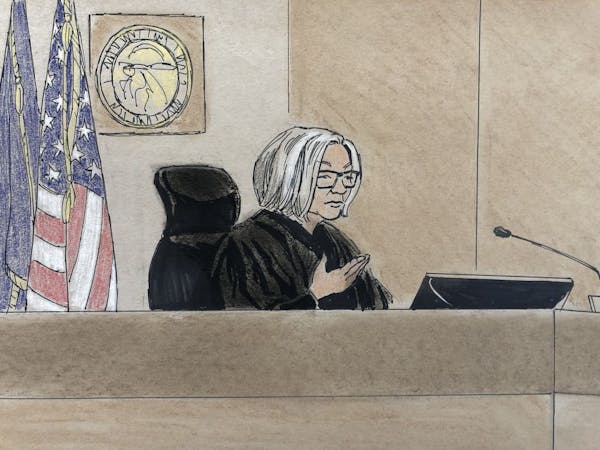A Hennepin County district judge has imposed tight restrictions on public and media access to the highly anticipated trial of Mohamed Noor, the former Minneapolis police officer charged with murdering Justine Ruszczyk Damond.
With Noor's trial set to begin Monday, Judge Kathryn L. Quaintance cited the need to preserve "order and decorum" in issuing an order this week that places it in a courtroom that holds about two dozen seats — half the size of some others in the building. The judge reserved eight places for the media and 11 for the public. Quaintance also banned laptops, cellphones and recording devices from the floor on which the trial will take place, authorizing that people be searched to ensure compliance.
The Noor case marks a rare example in the American criminal justice system of an officer going to trial over a fatal shooting, and the first time in modern history a Minnesota police officer has been charged with murder for an on-duty death.
The restrictions pose serious First Amendment problems and will make it difficult for journalists to document the trial, said Jane Kirtley, a University of Minnesota professor who teaches media law.
"There's been a deliberate decision made here to limit access by the press and public," Kirtley said. "I appreciate the concerns that are being raised here, but it seems to me that [the courts] are overlooking the fact that the public and the press have a First Amendment right of access to a criminal proceeding like this one."
In similar high-profile trials, Kirtley said, judges have consulted with reporters to establish rules without hindering access for journalists or the public.
Quaintance has already prohibited cameras from the courtroom. The court granted media seats based on order of request. The Star Tribune, Minnesota Public Radio, KSTP-TV and KARE-TV are the only local media who secured spots, said District Court spokesman Spenser Bickett. The other four media seats will go to ABC Australia, Channel 9 Australia, the Associated Press and the New York Times.
The families of Noor and Damond will be limited to four seats each in the courtroom. Others will be permitted to observe from an overflow room. Quaintance's original order Wednesday stated that the trial would only be relayed in the overflow room by audio. On Thursday, after protest from media outlets, Quaintance and Hennepin County Chief District Judge Ivy Bernhardson amended the order to allow a video feed to the overflow room.
"Most importantly, it is the Court's role to safeguard the parties' right to fair and public proceedings and the public's right to access them," the order said.
Bickett would not comment on criticisms that the order could hinder First Amendment rights.
Media pushback
On March 15, Star Tribune Managing Editor Suki Dardarian sent a letter to the court raising concerns about potential media restrictions.
Dardarian asked the court to weigh journalists' roles when creating trial rules, offering to meet and discuss how to best navigate the situation. No one took Dardarian up on the offer, and she learned of the order when it went online Wednesday.
"This trial, and what we do when we cover it, strikes at the very core of our democracy and our role as citizens," Dardarian said in an interview. She said it's incumbent upon the press to accurately report what happens in the courtroom, a duty made more difficult by the limited size of the courtroom and restrictions on reporter tools such as laptops and cellphones. Reporters cover court cases across America every day without interrupting the proceedings, she said.
Nancy Cassutt, news director for Minnesota Public Radio, said it's the judge's prerogative to set rules for the courtroom, but she agreed that the restrictions will hinder the media's ability to show the public how the process plays out.
"I think eight seats for the media is too restrictive," said Cassutt. "That doesn't even account for the local media here to cover a story that we've all been covering for a year and a half."
Mark Anfinson, attorney for the Minnesota Newspaper Association, was lobbying the courts Thursday for better media access to the trial, which he said is paramount for covering a case that has captured wide interest among Minnesotans.
"Their only opportunity to learn about it will come through local news organizations," said Anfinson. "And for reasons that remain completely mystifying to me, the Hennepin County District Court seems tone deaf to that reality."
Andy Mannix • 612-673-4036

Minneapolis schools, teachers reach tentative agreement to avert strike
Men knock woman down and steal her dog during walk, St. Paul police say

Minneapolis reaches $150k settlement with eyewitness of George Floyd's murder
He grew up legally in Minnesota, but immigration law gap may one day force student to leave

